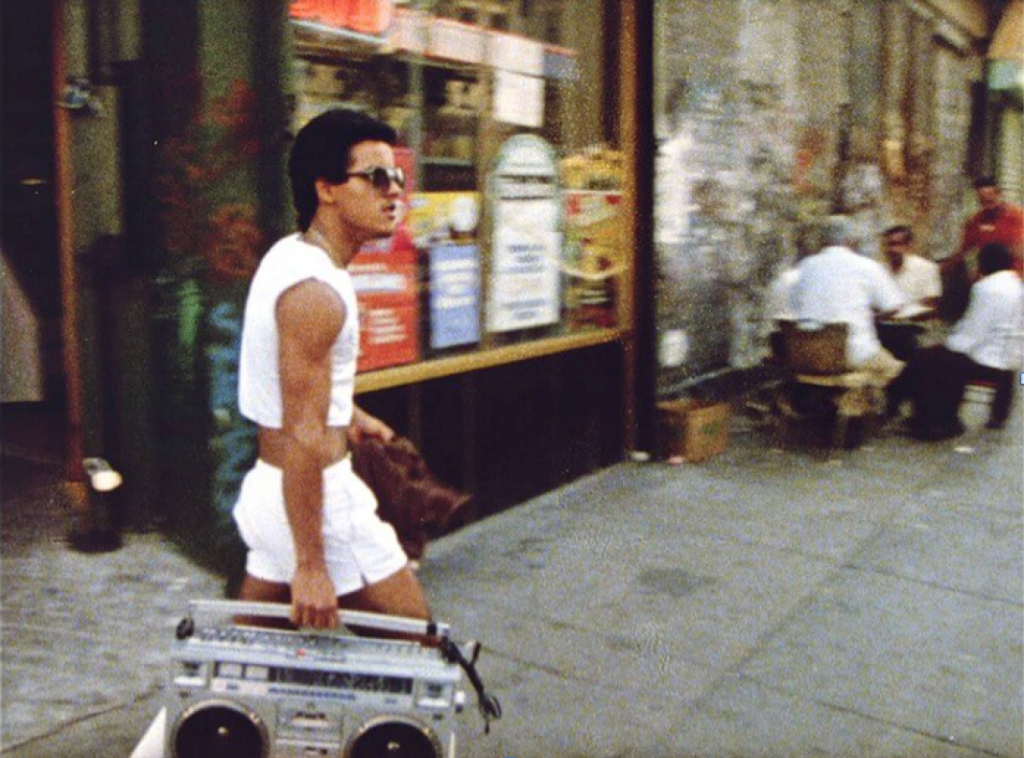Screening Tuesday January 31 at 7pm

Los Sures Film Review
Staci Dubow
Often, when I envision the past, I do so in faded colors. The images come to me in more of a Kodochrome stock than in the shades of reality that colored past just as much as present. Diego Echeverria’s 1984 documentary, Los Sures, imagines history quite differently. The film, a time capsule to Williamsburg circa 1984, paints the titular Southside neighborhood in vivid colors, with graffiti walls and metallic boom boxes speckling its streets.
The hour-long flashback begins with the facts. “Los Sures” translates to “the south side”; the town consists of “20,000 Hispanic people, most of them Puerto Rican”; “It is the poorest section of New York City.”
The film, mainly narrated by five Los Sures residents, then unfolds through a series of vignettes. The two male and three female narrators take Echeverria through the day-to-day events of the predominantly Puerto Rican and Dominican American neighborhood. Echeverria interferes little in their narration, allowing viewers to draw their own connections between stories, rather than constructing his own account. But what one can surmise, almost unequivocally, is that these Los Sures days, filled with both deep connection and intense struggle, are markers of what was once alive in the now gentrified mecca of expensive coffee shops, ironic t-shirts and scraggly beards.
Using cinema verité to its fullest ability, the film carefully balances both the joy and struggle that marked existence in Los Sures. While we hear articulations of gang violence and a neighborhood wrought with drugs, we also see moments of children’s impromptu dance battles and the comforting hugs between neighborhoods.
One interviewee, Marta Aviles, a single mother to five and welfare recipient, tells Echeverria “I don’t feel a need to leave Williamsburg to solve my problems. Where would I go?” Ironically, Williamsburg, only a few decades later would not be a place to leave, but a place to come to. Today, the area’s rents have skyrockets and many of its early residents have been forced out – a reality eerily prophesized by one unnamed resident who, after a fire, states “We cannot go back, we have no home.”
Los Sures’ many cultural elements, vividly assembled in Echeverria’s footage, – food, graffiti, dance, and fashion – have since been altered, coopted, and altogether forgotten. But Echeverria makes clear — through a beautiful restoration courtesy of Union Docs – that the colors of its history will not fade. As we move into the future, we must take with it all the iterations of a place’s past. Los Sures does just that. It says: this place may have changed. But its culture, customs, and community – in all their vivid color – were here, and will be remembered.
Echeverria’s film has been expanded into a larger project, Living Los Sures, which features many shorter works, like the interactive documentary “89 Steps” and collaborative studio program: documentary fellows.
To read an interview with the filmmaker check out: https://www.vice.com/en_us/article/diego-echeverrias-los-sures-remembers-when-the-south-side-of-williamsburg-was-wild-666
Staci Dubow (2018) is majoring in History and Film/Media Studies. She is a writer and editor for the on campus publications Campus Vinyl and ETC Magazine – platforms through which she can explore her interest in art’s capacity, both historically and contemporarily, for social consciousness and consequently social and political change. She is also involved on campus in Speak UP Bucknell and teaches yoga at Bucknell and in the Lewisburg community.